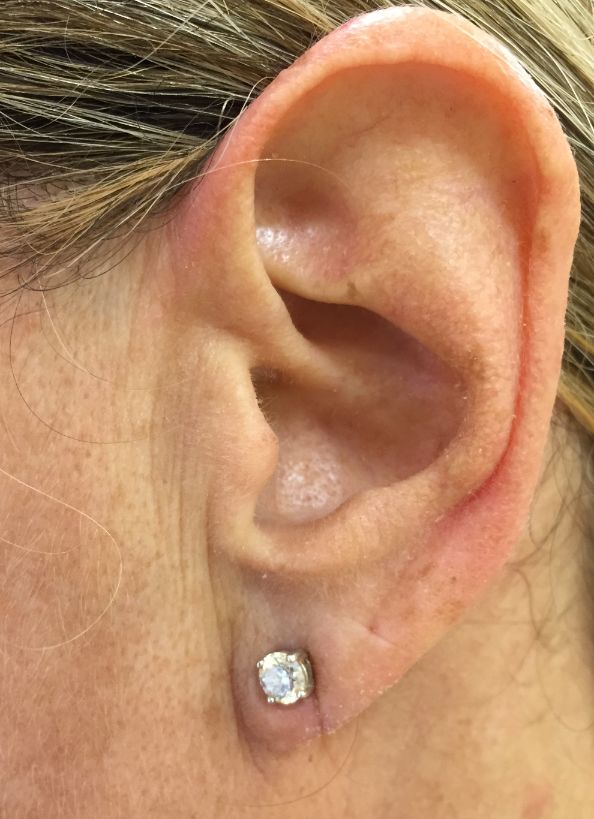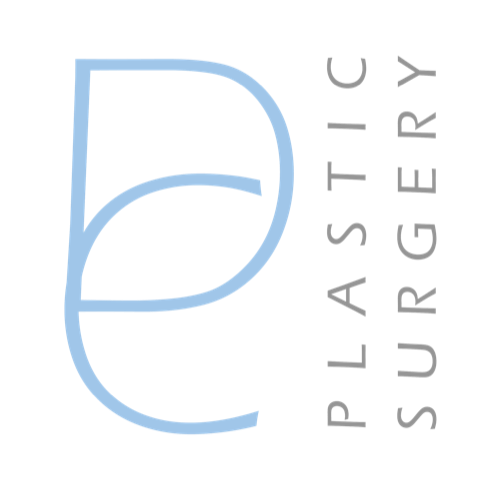Ear Procedures
Mr Chester treats a number of cosmetic ear problems.
Pinnaplasty (otoplasty, prominent ear correction)
Mr Chester carries out ear correction surgery for adults. Prominent ears can cause self-consciousness and may affect the way the hair can be worn or styled. Sometimes in later life as hair thins, ears become more obvious as they are more difficult to hide. Prominent ear correction can be performed under local anaesthetic (numbing injections only) or general anaesthetic (put to sleep). For many, local anaesthetic is preferred as it is reduces risk. Another advantage of being awake is that Mr Chester can show you the result in a mirror during the operation!
In the initial consultation, Mr Chester will assess your suitability for surgery and explain the operation in detail including potential risks and complications.
The degree of surgical correction required depends on the way the individual’s ears are made. Usually the procedure involves removing a strip of skin from behind the ears, reshaping with internal permanent stitches and sometimes removal of cartilage from the bowls of the ears (conchal reduction). Other types of internal stitches are sometimes also used. Dissolvable stitches are normally used to close the skin. A head bandage is applied over padded dressings. Scars are generally well-hidden behind the ears.
Mr Chester will see you in clinic approximately 7 days after the operation to remove the bandages and trim stitch ends . It is advisable that you wear a wide sweat band or hair band to protect the ears at night and if doing sports for 6 weeks. You should avoid contact sports for 6 weeks. Patients require require 1-2 weeks off work depending on their occupation.
Patient photographs (NB only limited views are shown to maintain patient confidentiality)
Case 1
31-year-old lady with prominent ears. Arrows show that normal folds have not formed properly during development of the ear, causing the upper part of the ear to protrude. Ear corrected with combination of stitches and some cartilage removal to reduce the bowls of the ears. Photo on right shows appearance at approximately 3 months. Note the folds are now present and the ear is closer to the side of the head.
Before surgery

After surgery
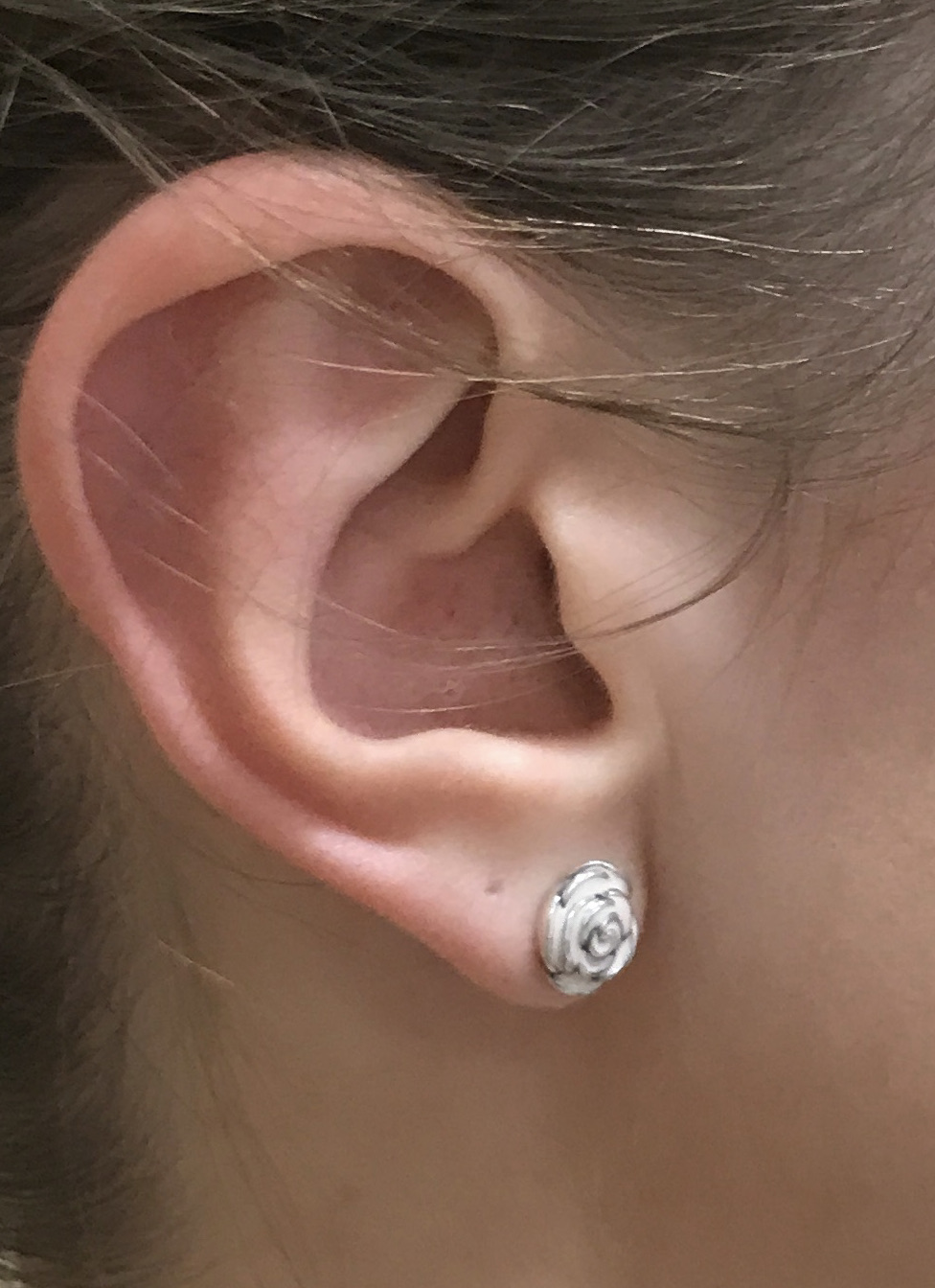
Case 2
20-year-old gentleman with prominent ears. Corrected with combination of internal stitches and some cartilage removal. Post-operative photographs taken at 2 months are seen on the right hand side.
Correction of earlobe stretching
Before surgery
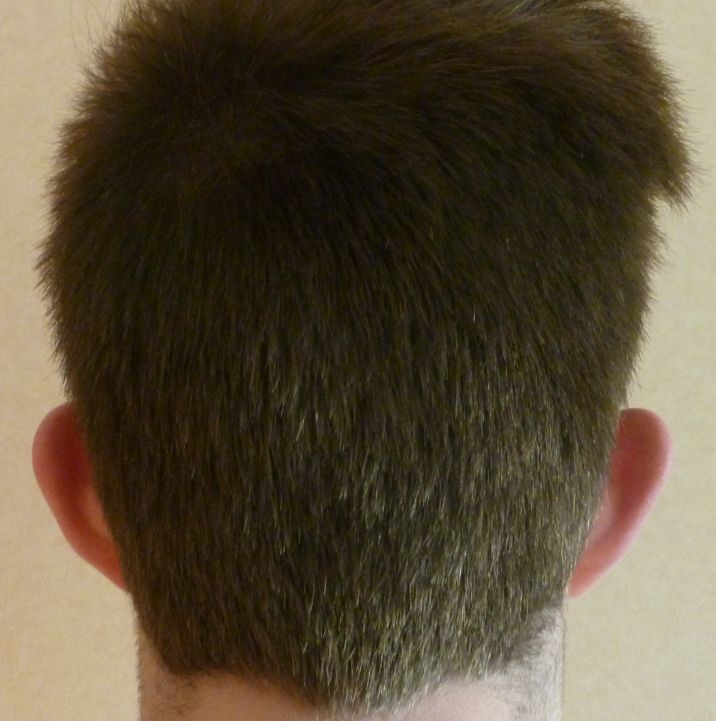
After surgery

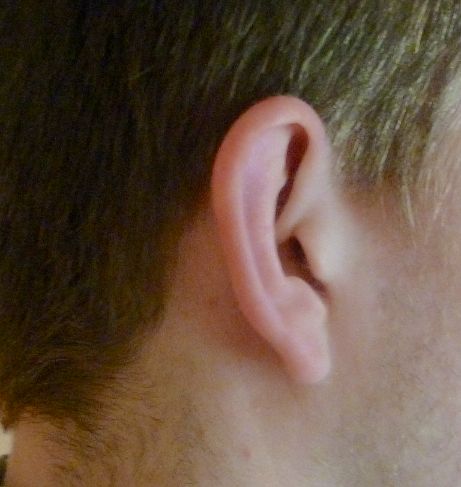
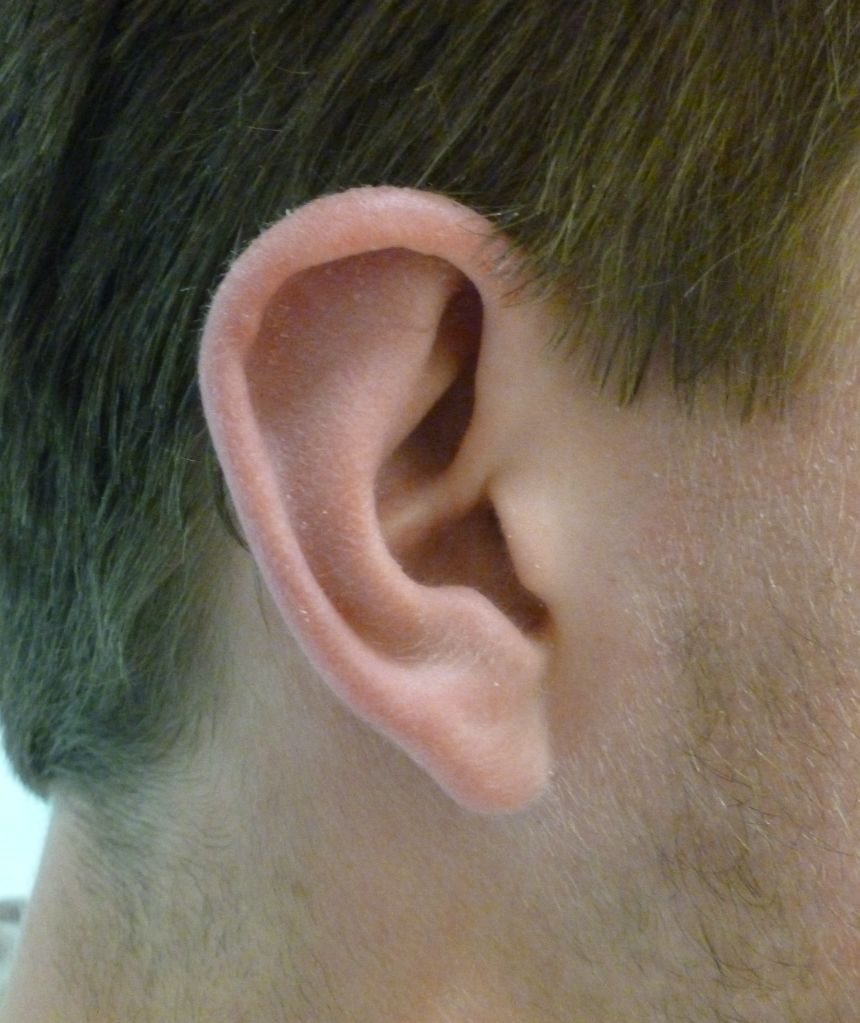
Case 3
Mr Chester has experience of treating stretched earlobes which have occurred as part of the practice known as gauging. A number of patients have sought corrective surgery as they embark on professional careers, for example in the armed forces or in client-facing roles. The degree of earlobe stretching dictates the difficulty of the procedure, the degree of scarring and the quality of the earlobe after the surgery. Mr Chester will assess your problem in clinic first to explain the option of surgical repair together with the potential risks and likely outcome.
This operation is performed under local anaesthetic (numbing injections only) as an outpatient procedure and takes around 30-45 minutes per ear depending on the complexity of the problem. Following the operation, Mr Chester will see you in clinic around 7-10 days to remove the stitches. Contact sports should be avoided for 6 weeks to allow sufficient strength in the repairs but most other activities can commence after a week.
The photographs below show a 19-year-old gentleman who has a severe version of this problem having stretched the hole in his ear to 58mm previously. The post-operative photographs are taken at 7 months. Scarring will fade further over the next 6 months.
Split ear-lobe repair
Before surgery
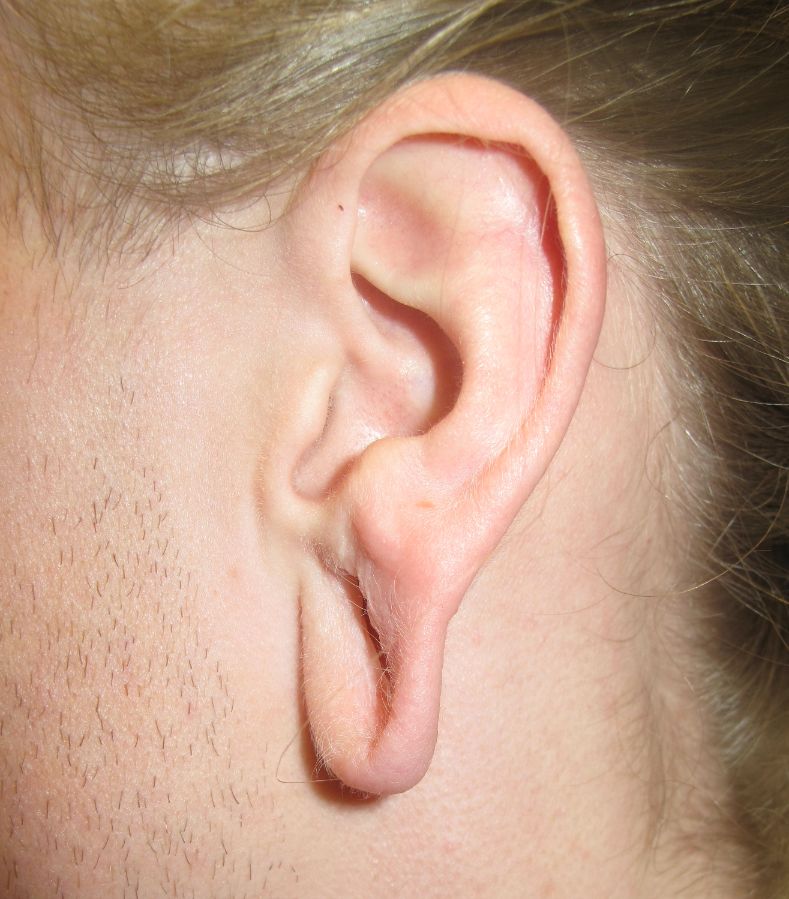
After surgery
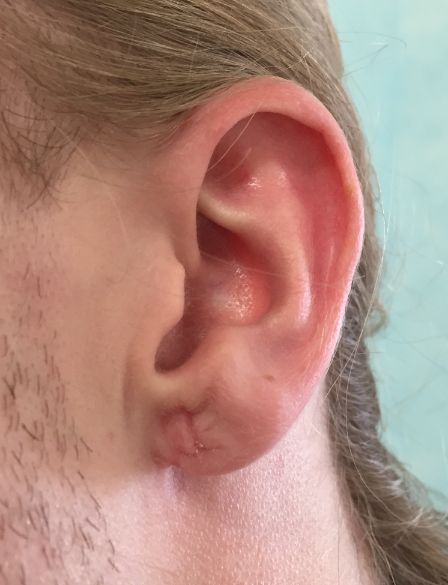
Case 4
It is not uncommon for the holes in earlobes to stretch with time and the weight of earrings. Sometimes the stretched hole progresses and a complete split develops in the earlobe. Minor trauma to the ear may precipitate this problem. The earlobe split may cause cosmetic concern and prevents earrings being worn.
Surgery to correct this problem is performed under local anaesthetic (a numbing injection only) as an outpatient procedure. The skin edges of the gap are removed and stitches are inserted to close the earlobe back together. Mr Chester usually uses a technique called an L-shaped flap at the lower portion of the earlobe to reduce the chance of the earlobe scar contracting and producing a contour deformity. Whilst usually the gap in the ear is sewn up, Mr Chester can employ a technique to make a new hole for an earring. The hole is then kept open with a narrow plastic tube for 3 weeks. At 3 weeks Mr Chester can then replace the tube for one of your earrings in clinic. There is a risk of the problem recurring after surgery and Mr Chester will carefully explain the treatment options to you together with the risks.
The photographs below show a patient who has had closure of the a split earlobe with recreation of the earring hole. The left hand photo shows the split in the ear lobe, which is more obvious when the ear is pulled slightly as shown in middle photograph. The right hand photograph has been taken at 3 weeks following surgery to close the gap and recreate a new hole. An earring has been inserted by Mr Chester. Scarring will fade further over the next 6 months.
Before surgery
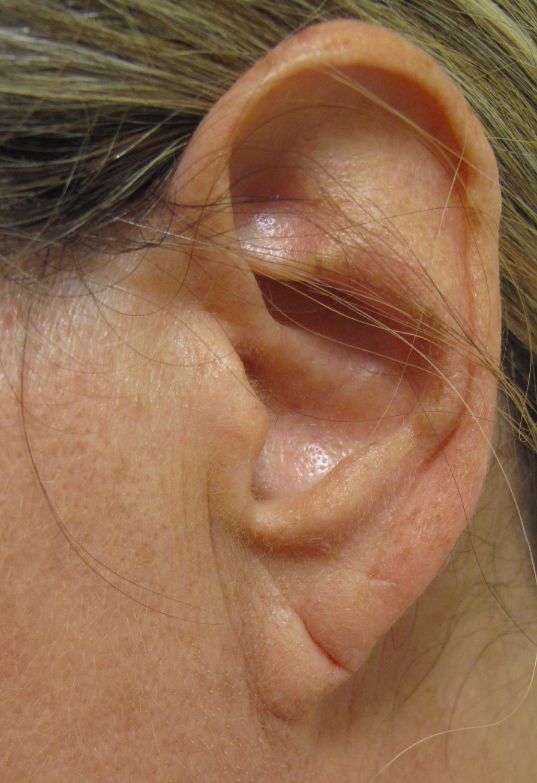
After surgery
